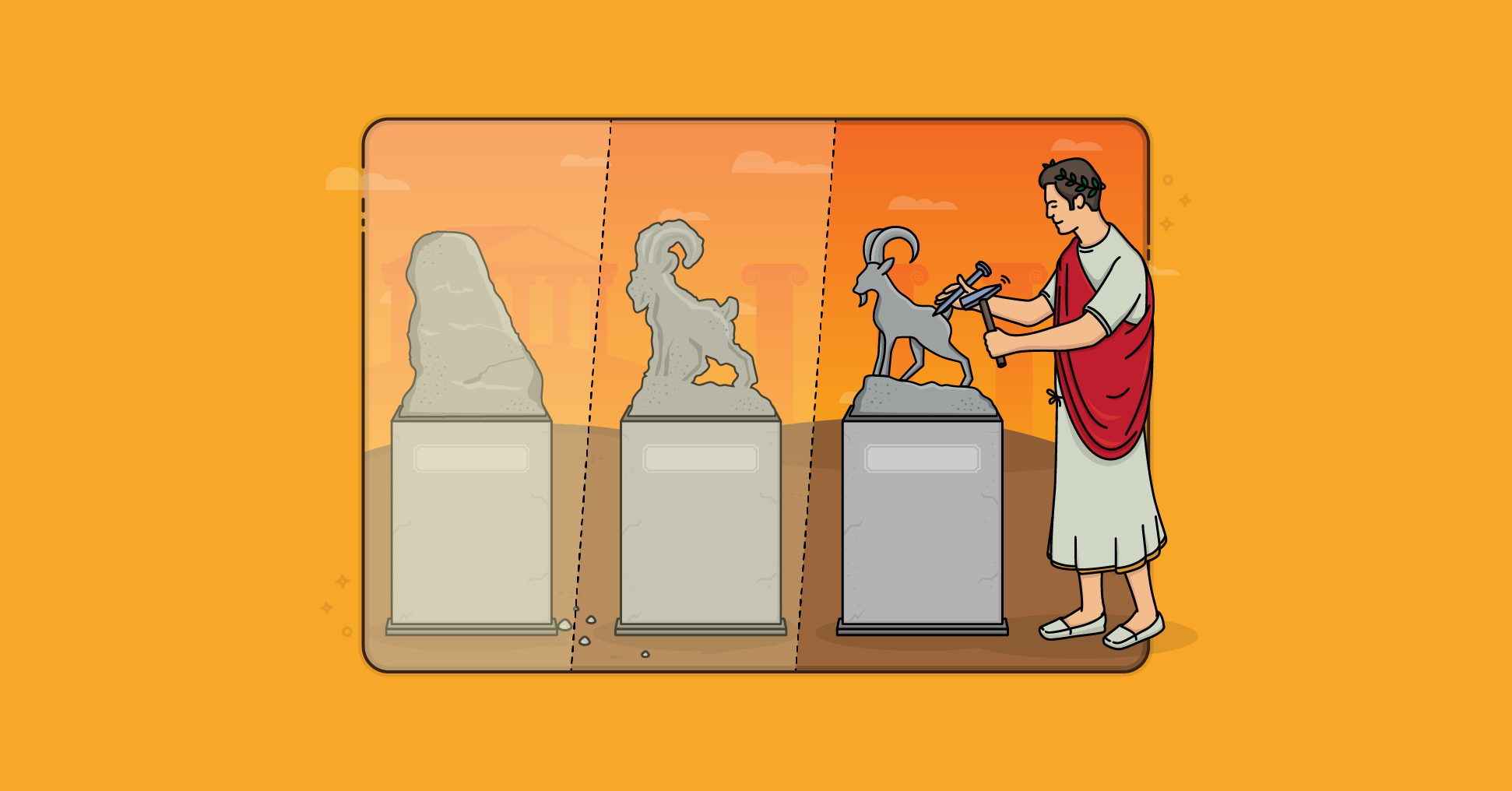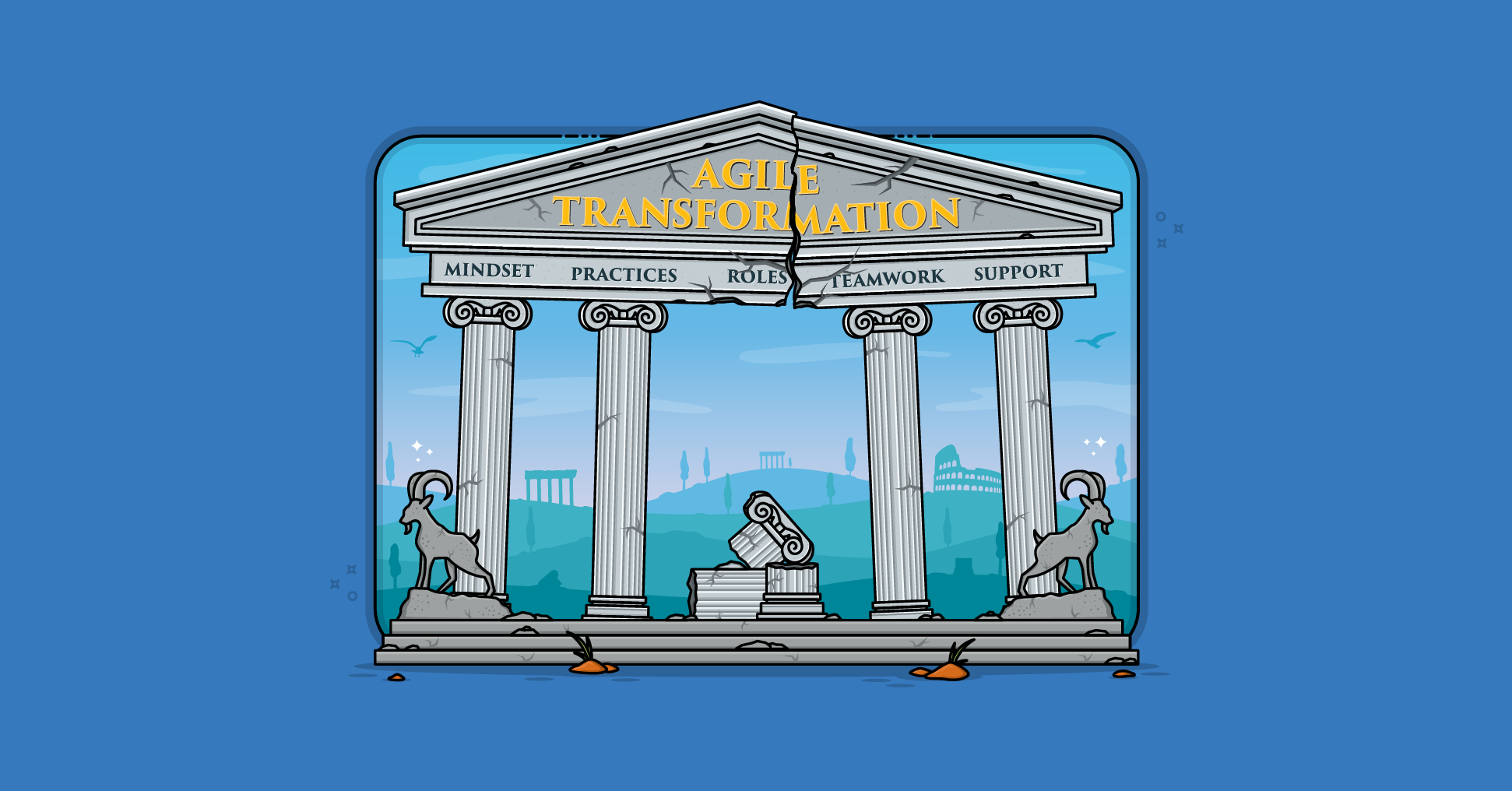If your team feels like it’s spending too much time in their backlog refinement meeting, they’re probably right. In my experience, more time is wasted in refinement sessions than in all other meetings combined.
The problem isn’t with refinement itself, but how some teams approach it. To fix it, start with the purpose of refinement. (For more on the purpose of all the Scrum meetings, read “Do Scrum Teams Meet Too Much?”)
Prefer to watch instead of read? In this short video, I walk through why most teams spend too much time in refinement sessions—and how to fix it.
The Purpose of a Refinement Session
The purpose of refinement is simple: To ensure that the items near the top of the product backlog can likely be completed in the next iteration.
That means those items need to be:
- Small enough to finish in a single iteration, and
- Sufficiently understood that the team can start work with confidence.
Let’s explore what that means.
Small Enough to Fit
“Small” is straightforward. The team can’t take a large backlog item into an iteration and expect to finish it. Most teams set a maximum size limit for any item they bring into an iteration. I recommend no more than half of the team’s velocity.
For example, if your team’s velocity is 20, you might allow an 8-point item into the iteration, but not a 13-point one. Ideally, items are even smaller—but half the velocity serves as a good upper limit when needed.
“The Goal Is Confidence Not Certainty”
Sufficiently Understood (But Not Perfectly)
Sufficiently understood means that enough is known about an item to bring it into the next iteration. It does not mean that everything is understood about an item.
The goal in any refinement session is to reach a point where the team feels confident they can probably complete the item within the iteration. Teams aren’t aiming to eliminate all uncertainty; they just need to reduce it to a level where they feel comfortable starting.
In fact, I want teams to end refinement thinking,
“We’ve resolved the big issues and enough small ones that we’re confident we can finish this.”
not
“We’ve discussed this so thoroughly that there’s nothing left to learn.”
There’s a balance between preparing enough and over-preparing. Often, it’s faster to start the work and let some discovery happen inside the iteration as team members overlap work and collaborate.
A little discovery during development is a feature of agile project management, not a flaw.
The Cost of Over-Refinement
When teams try to resolve every open issue during refinement, sessions drag on unnecessarily. You end up with the entire team sitting through detailed discussions that involve a few members.
It’s not just inefficient, it’s frustrating. No one wants to be stuck in a meeting where most of the conversation doesn’t apply to them.
So how do you make refinement sessions shorter, more productive, and less painful? Here are three ways.
1. Treat Refinement as a Pre-Planning Checkpoint
Think of your backlog refinement meeting as a pre-planning check, not a deep-dive workshop.
You don’t need to rename it but you should reframe it. The goal is to quickly review the top backlog items and confirm they’re ready for the next iteration.
This often includes splitting stories, estimating items that have risen in priority, or adding just enough detail for clarity.
These quick adjustments help ensure backlog items are small enough and ready—without turning refinement into a problem-solving marathon.
2. Stop Aiming for “Perfect” Understanding
Remind the team that refinement is not about certainty—it’s about readiness. Encourage your team to ask this one question often:
“Do we know enough about this item that we can probably finish it during the iteration?”
The phrase probably finish it encourages just enough analysis without overdoing it. It keeps discussions focused on what’s essential and reminds everyone that you don’t need 100% clarity before moving forward.
3. Consider Involving Only Part of the Team
While I generally support whole-team involvement in agile activities, backlog refinement can be an exception. You can get nearly the same value with fewer people—and in much less time.
Having about two-thirds of the team participate is often sufficient. You’ll hear nearly all the same questions and surface the same uncertainties without pulling everyone away from their work.
Rotate participation so that over time, everyone stays aligned. If someone consistently can’t attend, raise it in a retrospective.
This flexible approach keeps the process collaborative and efficient.
The Bottom Line
Backlog refinement sessions should help your team prepare for the next iteration, not wear them down before it starts.
When you treat refinement as a quick readiness check, focus on “sufficiently understood” rather than “perfectly defined,” and involve only the people who need to be there, you’ll cut the time dramatically without losing effectiveness.
Key Takeaways
- Refinement sessions are for readiness, not perfection.
- Items should be small enough (no more than half team velocity).
- Aim for “sufficiently understood,” not “completely known.”
- Use refinement as a quick pre-planning check, not a problem-solving meeting.
- Not everyone needs to attend every time.
Refinement sessions don’t have to be a drag. With a little rethinking, they can become one of the most valuable—and least painful—meetings of your sprint.
Want to help your team spend less time in meetings and more time delivering value? Explore our Meeting Observation and Recommendation Workshops. These short, focused engagements put our experts inside your Scrum meetings to observe and offer tailored insights for improvement.
Last update: November 18th, 2025









